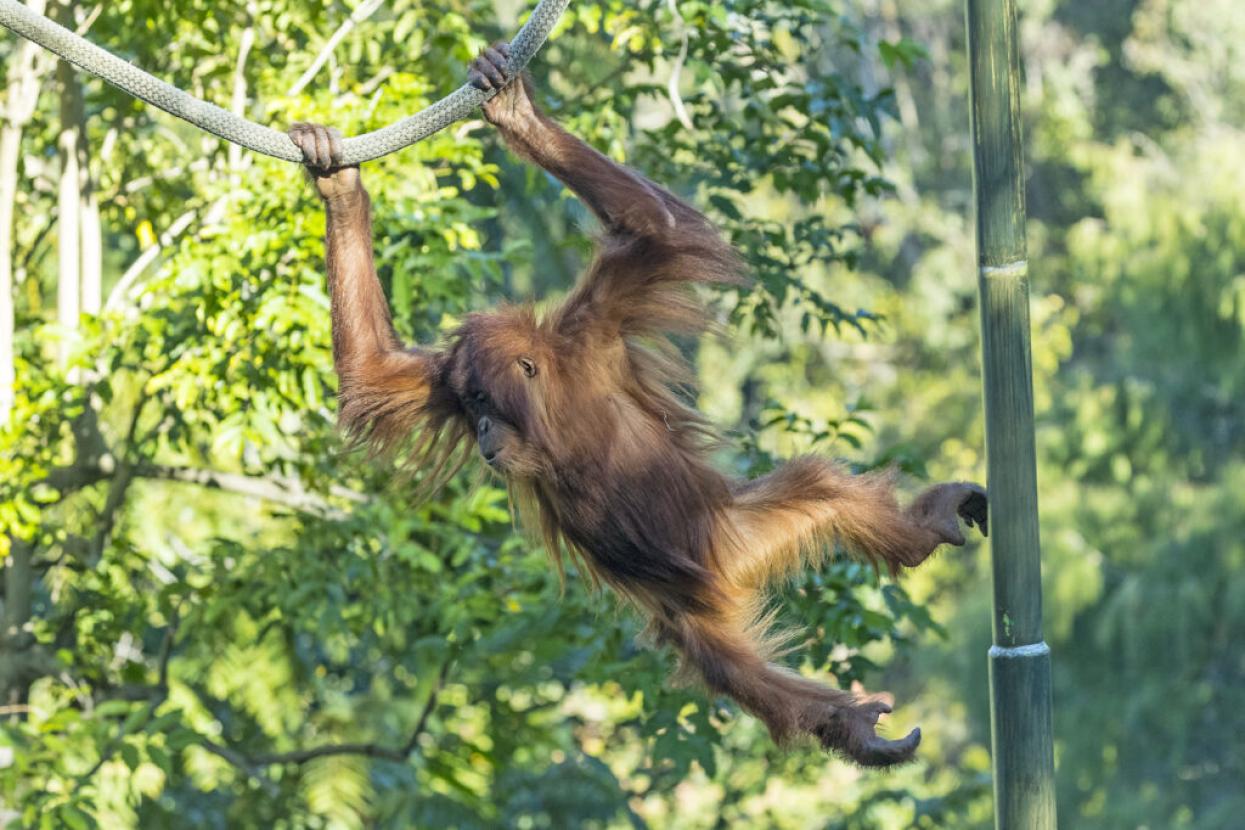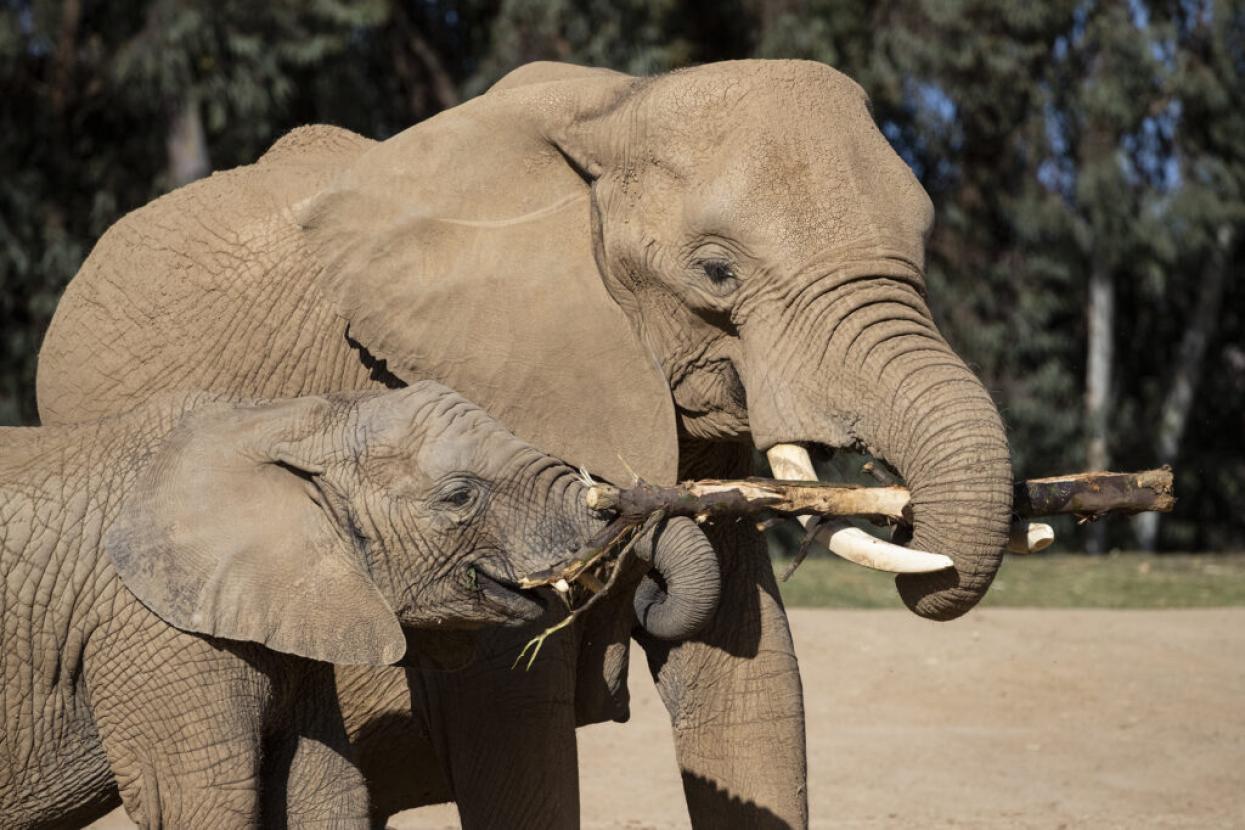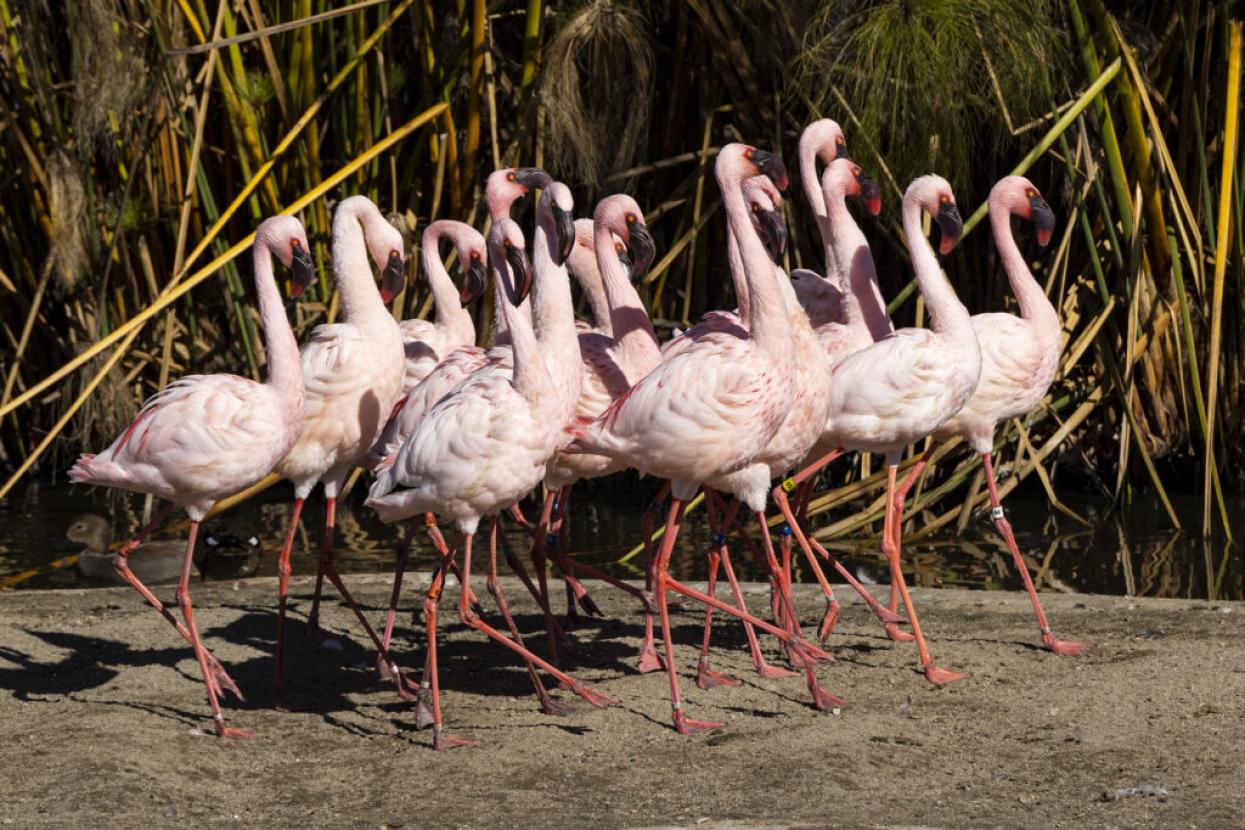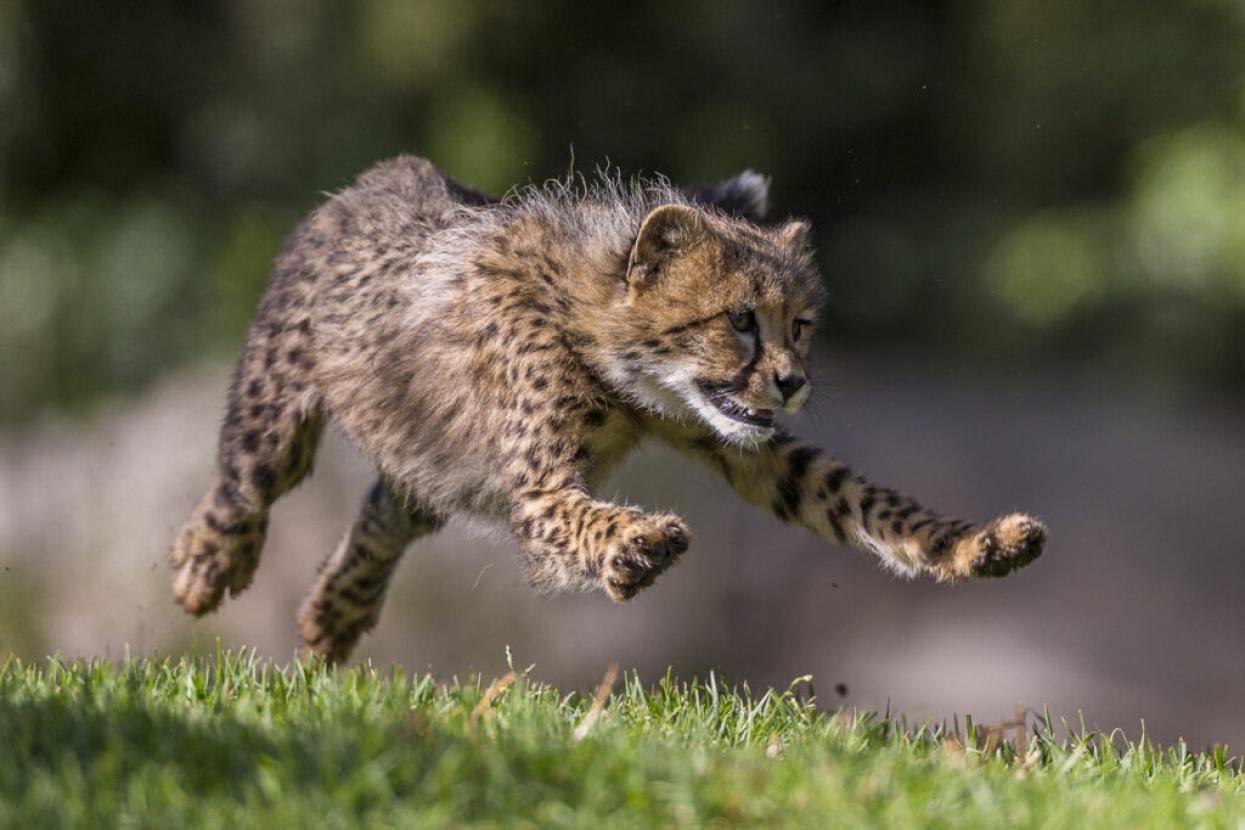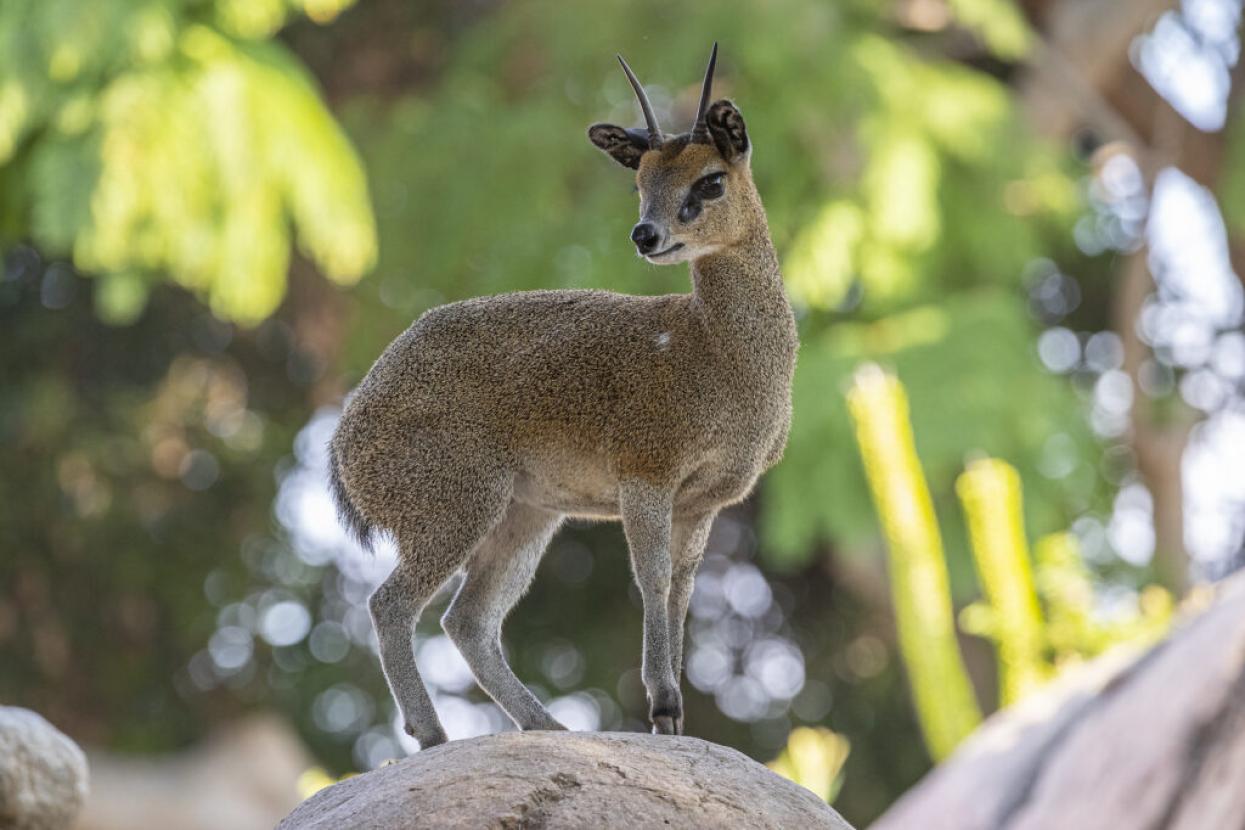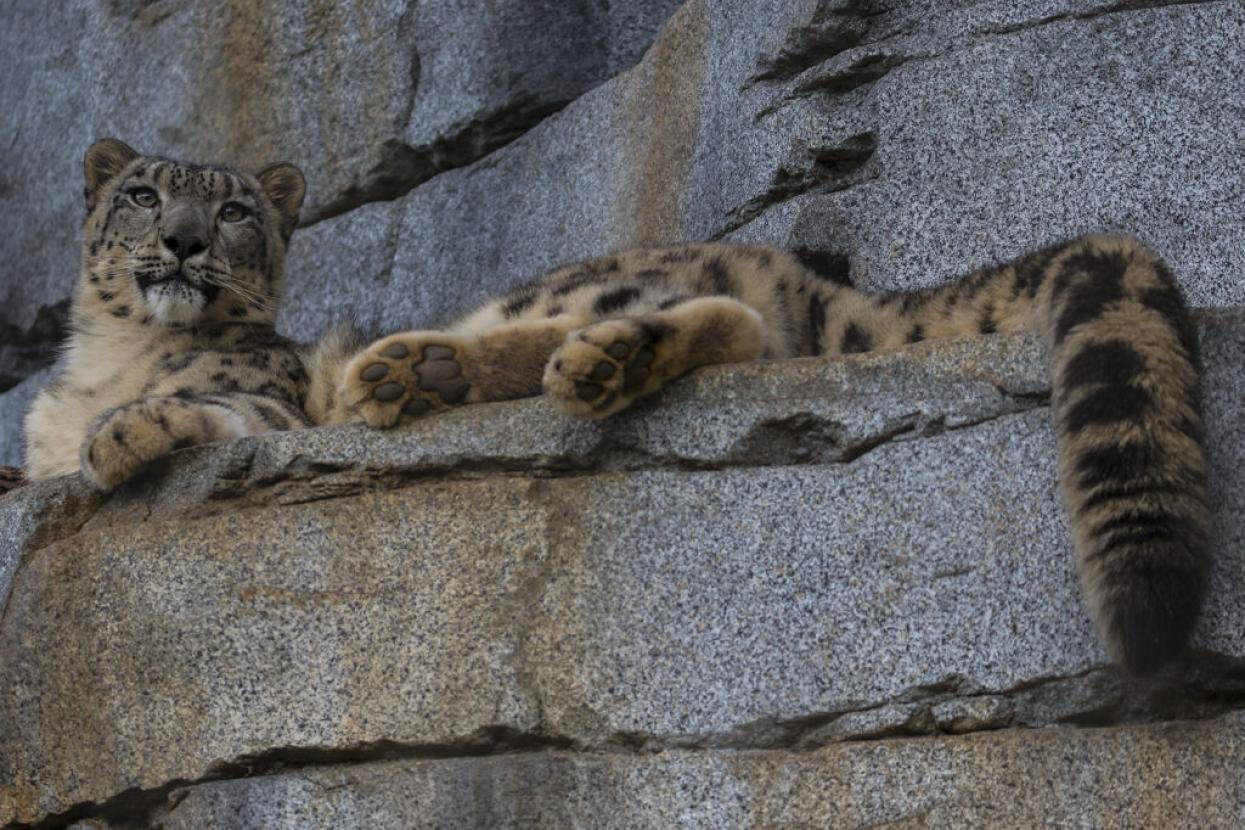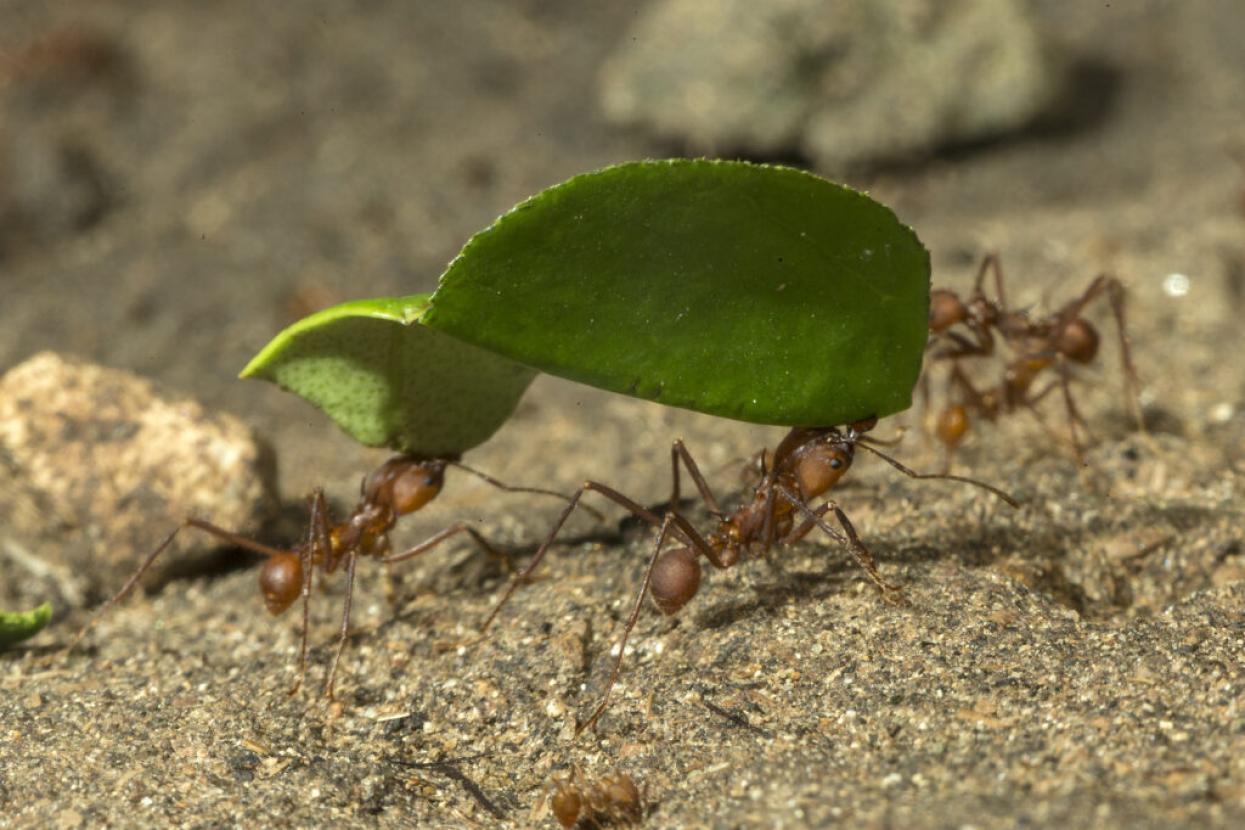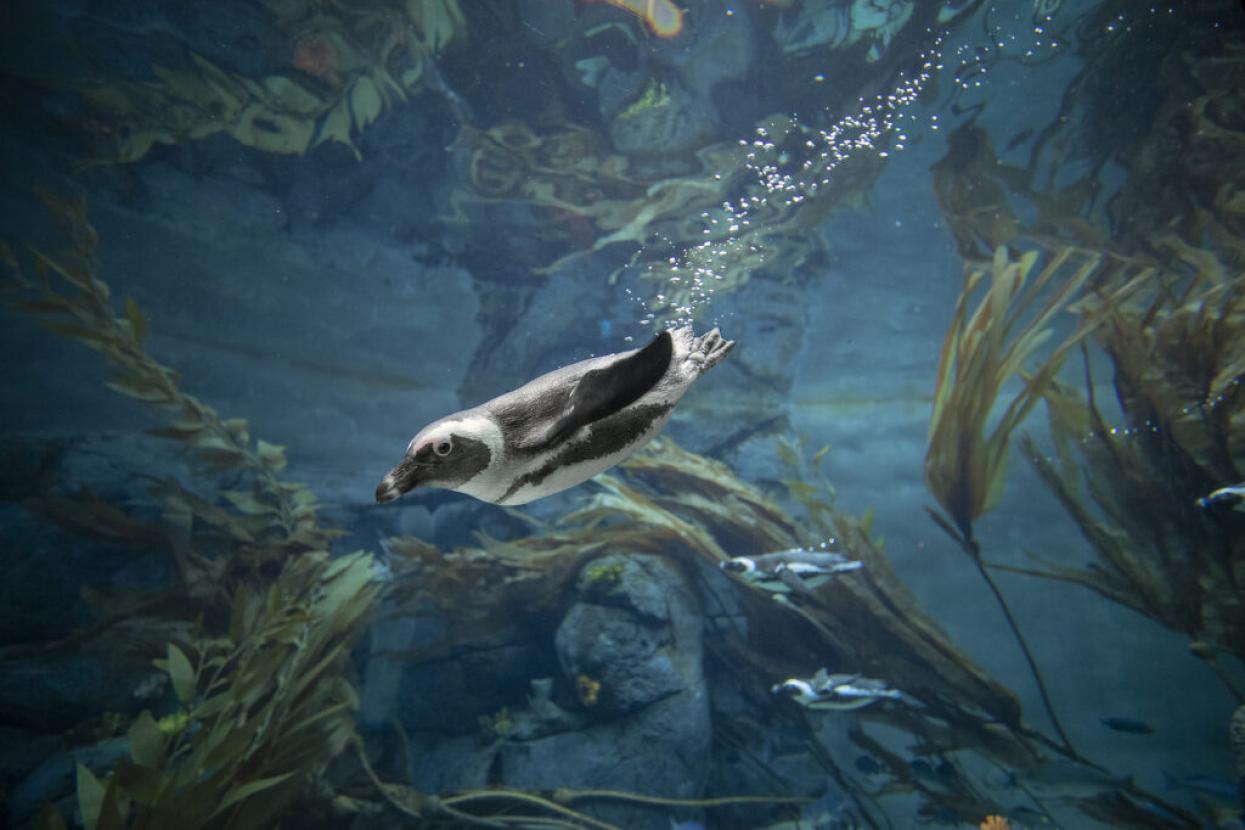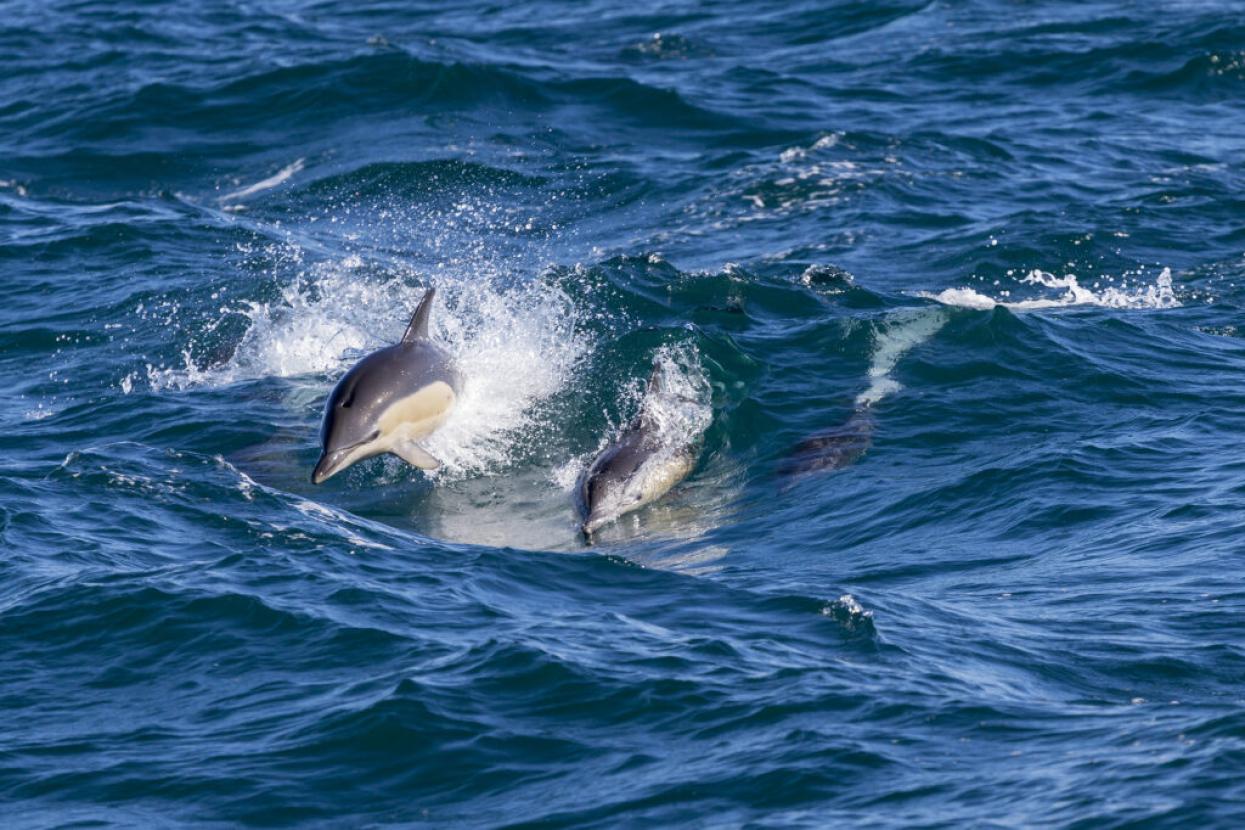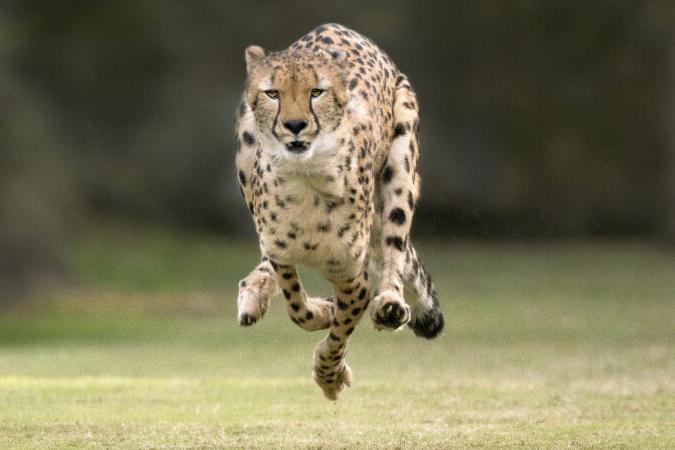
Celebrating the Talents of Nature’s Finest Athletes
As the world comes together to cheer on our top athletes, let’s take a moment to celebrate and admire the wildlife that could rival them. Exceptional speed, strength, agility, and exemplary teamwork make these species emerge as champions in their own right. Join us as we explore awe-inspiring feats of nature and give outstanding wildlife their chance to shine.
Forest Gymnasts
Orangutans spend most of their time in trees, swinging gracefully from branch to branch and showcasing remarkable agility, flexibility, and strength. Their long fingers and toes can easily grasp branches and vines, making them incredible acrobats. With arms measuring over seven feet long, strong fingers, and prehensile feet, they’re made for life in the trees. In fact, orangutans can sometimes look a bit awkward on the ground as they use their arms as support while they walk or lift them high above their head as they go.
Orangutans are the largest arboreal mammals and spend over 95 percent of their time in trees.
Up to the Tusk
African elephants hold the title of largest land mammals—and they’re also the strongest. A 14,000-pound elephant can carry nearly 20,000 pounds! Their trunks alone can lift over 700 pounds. These unique appendages are strong enough to knock down trees and branches, yet delicate enough to pick up a single piece of straw.
An elephant’s trunk has 16 major muscles, which allows them to lift heavy weights.
Together as One
There are few species more in sync than flamingos. These birds travel in large, tightly packed groups called flamboyances, which often move together as one. Their large numbers also make for eye-catching ritualized displays. These synchronized behaviors are used to communicate or alert the group of possible danger. This includes head-flagging, when they stretch their necks out and rhythmically turn their head from side to side; wing salutes, or showing off their contrasting colors with wings and neck outstretched; and marching, where a large, tightly packed flock walks together before switching directions abruptly. Flamingos are so graceful and aligned in their movements, it’s no surprise there are synchronized swim techniques named after them!
The “flamingo” is a synchronized swimming move in which one leg is extended perpendicular to the surface and the other leg is bent into the chest.
Chasing Records
Run like the wind! Long and lanky, cheetahs are famed sprinters of the cat world. In fact, they’re the fastest land animals on the planet. Their bodies are uniquely designed to run extremely fast over fairly short distances, allowing them to catch prey that other big cats can’t get. It starts with a flexible spine that allows the cheetah’s front legs to stretch far forward on each stride. As they run, their hard, sharp claws act like cleats, giving the cat great traction. Meanwhile, their long tail is used as a rudder during high-speed chases, enabling cheetahs to turn on a dime, while their enlarged nostrils, lungs, and heart help them keep going. A small, cone-shaped piece of bare skin on the back of each front leg serves as a brake when it’s time to stop. That performance deserves the top spot in our book.
While running, a cheetah covers 20 to 22 feet in a single stride.
High Jump Heroes
One antelope leaps above all the others. Klipspringers are adapted to navigate the rock formations they live in, which are called kopjes. These tiny antelope can jump 12 feet straight in the air. Considering their main form of defense is evasion, this impressive ability helps keep them safe from predators. Additionally, while klipspringers may appear to be delicately standing on their tiptoes, their hooves are incredibly strong. They allow klipspringers to land on an area as small as a silver dollar, which enables them to jump from rock to rock.
Klipspringer is Afrikaans for “rock jumper,” which is fitting because they can jump up to 10 times their height.
Champion Climbing Cats
Snow leopards live in the remote mountains of Central Asia, so they need to be capable climbers. Their huge paws are covered with fur to not only protect them from the cold, but give them traction on snow and mountainsides. Their thick, beautiful tails can be almost as long as their bodies and assist with balance, helping keep them secure on rocky cliff faces. Their ability to leap up to six times their body length also helps make these cats astounding climbers.
The snow leopard’s tail acts as a built-in comforter when the cat wraps it around its body for added warmth.
Ready to Relay
Leafcutter ants are masters of teamwork, seamlessly passing plant pieces from one member of the colony to another as they work together to nourish their subterranean fungus gardens. With astonishing coordination, they then meticulously process the leaves into tiny pieces, demonstrating their intricate social structure and efficient division of labor within the colony. This coordinated teamwork is what makes leafcutter ants relay experts. They’re also true friends of the forest, playing a vital role in nutrient cycling and ecosystem health.
Leafcutter ants work together to bring leaves back to their colony.
Making a Splash
African penguins can dive over 400 feet deep, a remarkably skilled feat. They’re able to hold their breath for two minutes, which helps these hunters catch their food, including crustaceans and sardines. Their winning diving abilities are important because when they reach maturity, they will live at sea for 12–24 months before returning to their colony on land.
African penguins can swim up to 15 miles an hour.
Water Polo Pros
The oceans are filled with species that demonstrate impressive skills, including dolphins. Living in pods ranging in size from five individuals to hundreds, they could give water polo players a run for their money. As some of the most agile and speedy marine mammals, they work together to capture prey through coordinated attacks, using teamwork to achieve their goal.
Dolphins’ natural abilities to swim fast and leap clear of the water are part of what make them such champions.
Each and every day, wildlife demonstrate extraordinary abilities of speed, strength, agility, and teamwork that could rival even the most accomplished athletes. These diverse and sensational skills are essential to healthy biodiversity across the globe and are always something to champion and celebrate. So this summer, as we all come together to watch our best athletes compete, take some time to appreciate the wildlife around us, the incredible world we all share, and what’s possible when we each focus on doing our best.
Discover how your support helps save, protect, and care for wildlife at the San Diego Zoo, San Diego Zoo Safari Park, and across our eight Conservation Hubs.

